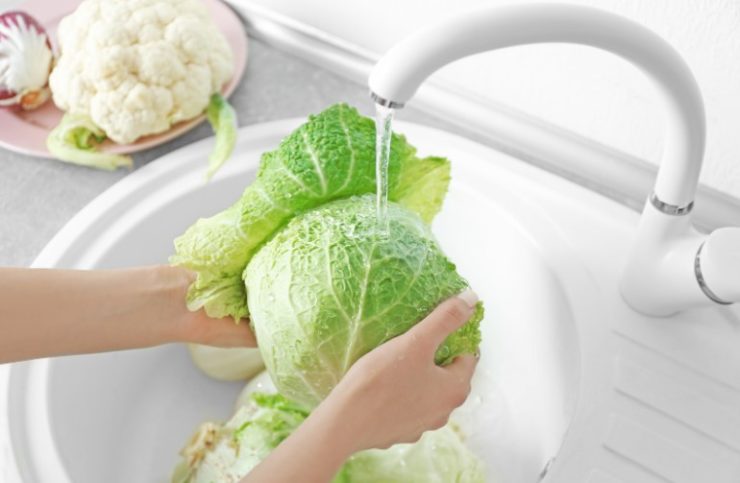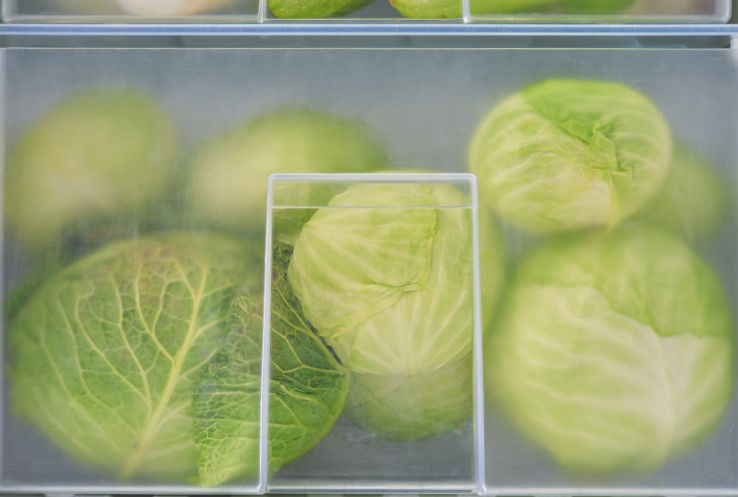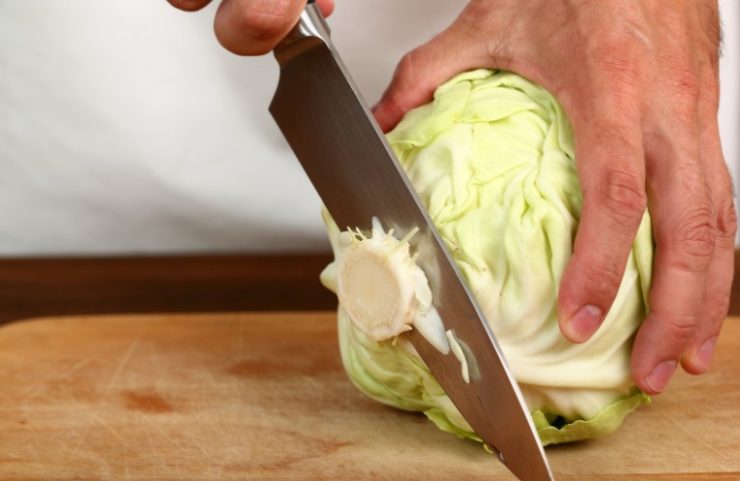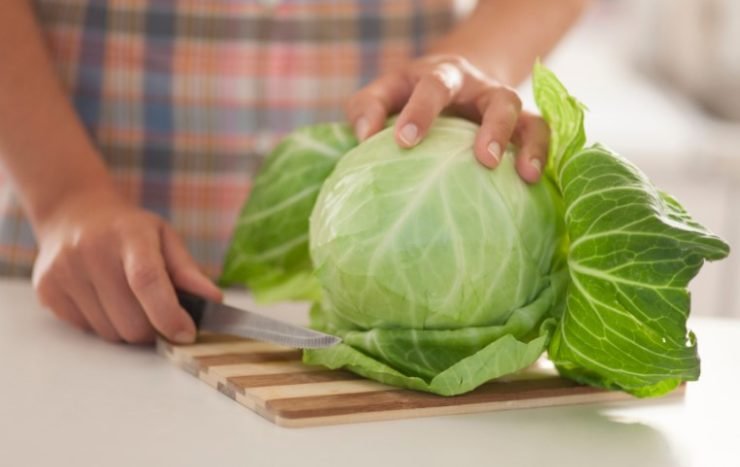Cabbage leaves are crunchy, delicious, and great for cabbage rolls, salads, or garnishes.
When I was a professional cook with an industrial steamer at my disposal, it was easy for me to take for granted how easy this process was for me. Fortunately, there are a few simple ways you can replicate the success of a professional restaurant without needing unusual or costly equipment.
In this article, I’ll share 3 methods home chefs can use to replicate the pros using everyday kitchen equipment. Here are a few of my favorite ways to quickly peel cabbage leaves without breaking them.
In This Article
But First, Always Rinse And Remove Outer Layers

Always remember to clean the outside of the cabbage before beginning any of the methods that I’ll be sharing below.
Remove the outermost layer of the cabbage. Then rinse the new exterior under your kitchen faucet. Be sure to rub free any dirt or debris that may have accumulated there.
The outer layer is usually rubbery and coarse, so you won’t be losing meaningful food product through this step. Once you’re complete, we’ll have better access to the better, broader leaves that rest underneath.
3 Simple Methods For Peeling Cabbage
Blanch The Cabbage
Blanching means quickly scalding a vegetable in boiling water, and then immediately cooling it in cold water or an ice bath.
For the cold water and ice bath, I like to use a large pot. As an alternative, you can use a large mixing bowl filled with ice and cold water.
Bring your water to a boil. Use a large stock pot that is big enough that you can fill it up halfway with water, and still fully submerge a cabbage head into it.
This is to give you enough clearance when you dip the cabbage. Your head of cabbage will displace water when it is submerged, and this will avoid any overflow.
With a pair of tongs, securely grab the cabbage head and dip it into the boiling water for 2-3 seconds. This will loosen and soften the leaves.
Place the cabbage in the cold water bath (or an ice bath) after you have blanched them.
This will stop it from cooking further and will make it cooler and easier to manage. Commit, but it’s OK to go slow and steady.
Remove the cabbage from the cold water after a few seconds and the leaves will be easy to peel.
After the first few layers, the leaves get smaller. I like to use the outermost leaves in full, and then save the rest of the head to make wedges or shreds.
If you’re hoping to peel the entire cabbage, you can repeat the blanching process again to release the inner layers.
Microwave The Cabbage
With this method, the microwave will act as a steamer.
Place a head of cabbage in the microwave next to a cup of water.
Run the microwave for 10 minutes. After 10 minutes, turn the cabbage over, and run the microwave for another 10 minutes.
Carefully remove the cabbage from the microwave. It will be very hot! Use a pair of tongs, or let it sit for 5 minutes so it’s easier to handle.
The cabbage should be pretty soft. Peel and save the broadest, nicest leaves.
Freeze The Cabbage

Freezing cabbage works great if you have a lot of time to prepare.
It can take 4 or more hours to freeze a whole cabbage head, but I would recommend putting it in the freezer a day ahead of time.
Wrap the head of cabbage in plastic wrap, or place it in a big plastic zipper bag, and put it in the freezer with enough room to fully freeze.
There is a lot of water in cabbage, and freezing it will cause the leaves to wilt as it thaws.
Allow a couple of hours for thawing.
This is great if you don’t have a big soup pot available, or would like to avoid using anything hot! This method requires no heat.
The leaves really do fall off when the cabbage thaws, and this is the kind of method aunties swear by.
Remember To Cut The Stem

Whichever method is suitable for you, you will want to cut the bottoms of the leaves where they are connected to the stem. This part of the leaf can be tough, but is easily removed with a sharp chef knife.
Frequently Asked Questions
How do you peel cabbage leaves without breaking them?
Blanching quickly in boiling water, microwaving a cabbage head in the microwave with a cup of water, or freezing a cabbage head ahead of time are the easiest ways to remove cabbage leaves without breaking them.
What is the best way to soften cabbage for cabbage rolls?
The best way to soften cabbage for cabbage rolls is to quickly and carefully dip a whole cabbage head into an appropriately sized pot with a pair of tongs. Submerge for a few seconds only.
Can you cook cabbage ahead of time?
It is ideal to cook the cabbage when you are prepared to use it, rather than preparing it ahead of time.

The 3 Best Ways To Peel Cabbage Leaves
- Total Time: 20 minutes
- Yield: Varies
Description
Learn 3 time-proven techniques for peeling cabbage using a stockpot, microwave or your freezer.
Ingredients
- 1 Cabbage head
Instructions
Blanch The Cabbage
- Bring a sizeable pot of water to a boil
- With a pair of tongs, submerge the cabbage head into the boiling water
- Remove cabbage head from water after 2-3 seconds
- Place cabbage head in ice bath or cold water
- Peel the outer layers and save the broadest leaves
Microwave The Cabbage
- Place cabbage and a cup of water in the microwave
- Heat for 10 minutes
- Flip cabbage, and heat another 10 minutes
- Remove, let cool, and peel cabbage leaves
Freezing A Cabbage Head Ahead Of Time
- Freeze a whole head of cabbage for a day
- Thaw and the outer layers will peel easily
- Prep Time: 20 minutes
- Cuisine: All
Keywords: how to peel cabbage, how to peel cabbage for cabbage rolls, ways to peel cabbage, how to peel cabbage leaves without breaking them








